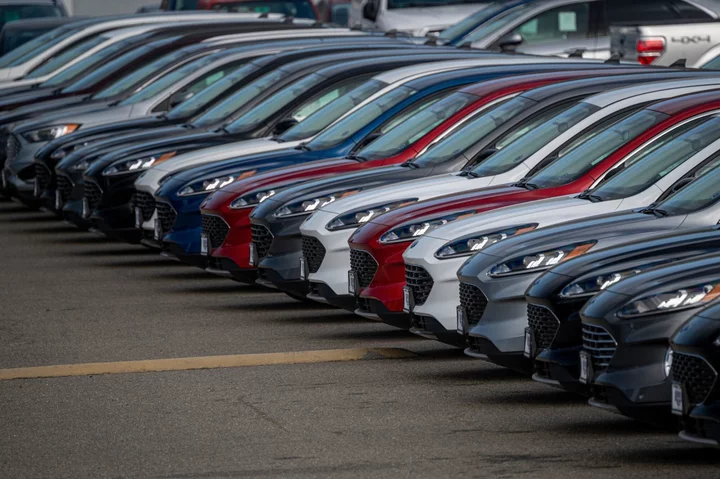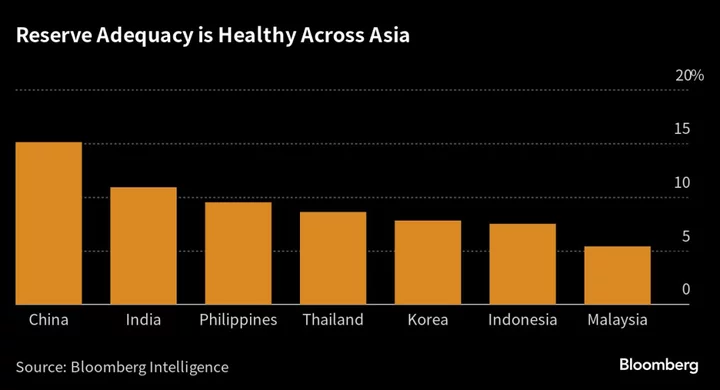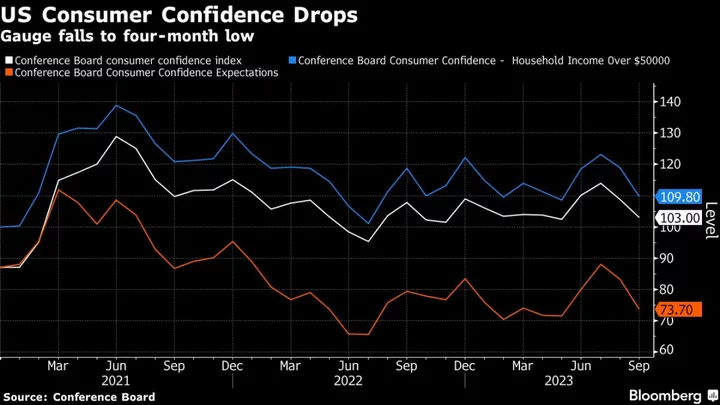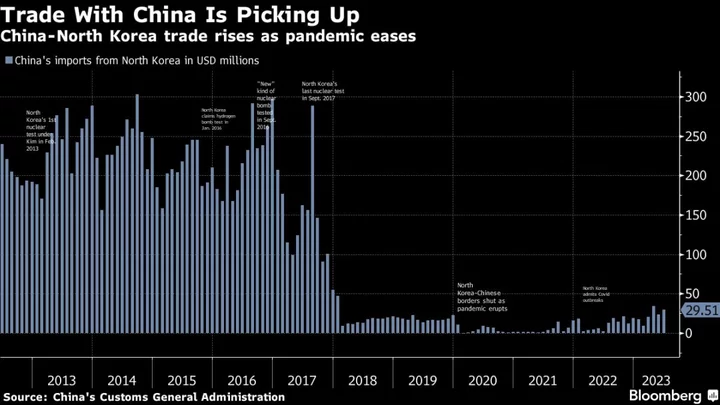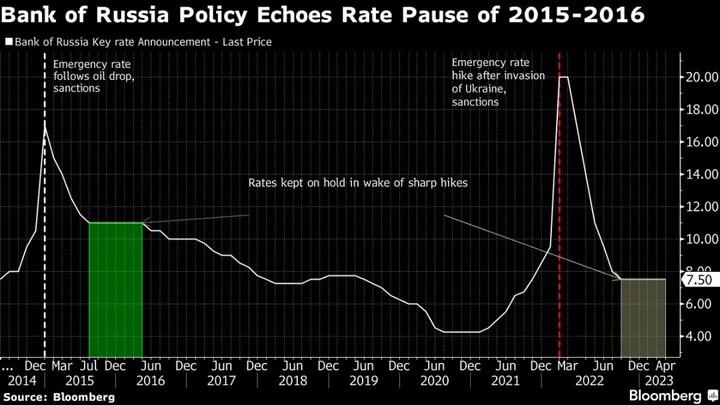Ford Motor Co.’s is throttling back on plans to ramp-up electric vehicle production, pointing the finger at a price war for battery-powered vehicles.
The automaker on Thursday said it would need another year to meet a year-end target to reach an annual production rate of 600,000 EVs, which it now expects to reach in 2024. Ford also abandoned plans to be making 2 million EVs a year by the end of 2026.
It now expects to see losses from EVs hit $4.5 billion this year, up from an earlier estimate of $3 billion. That’s more than double the $2.1 billion the company lost on EVs last year.
Ford’s price cuts are aimed at keeping pace with EV market leader Tesla Inc., which has slashed sticker prices this year.
Chief Executive Officer Jim Farley’s $50 billion bet on EVs is confronting slowing demand for plug-in models. Ford is still aiming to achieve an 8% return on battery-powered models, before interest and taxes, in three-and-a-half years, but how it earns that margin may change.
“Clearly, this transition to EVs is dynamic,” Farley told analysts on a conference call Thursday. “The pricing pressure has dramatically increased in just the last 60 days.”
Model e, Ford’s electric vehicle unit, had a loss of $1.08 billion in the second quarter alone, more than the $871.9 million deficit analysts had expected. Its EV sales fell in the quarter as it expanded production at factories in Michigan and Mexico. With EV inventory rising, Ford cut the price of the electric F-150 Lightning pickup last week, which caused a selloff that wiped out about $3.6 billion in market value in one day.
Farley said the challenge for Ford is that the latest wave of customers aren’t willing to pay the high prices that early adopters did for EVs.
“There are plenty of customers” for EVs, Farley said. “The issue is the price they’re willing to pay has come down.”
Shares of Ford gave up a postmarket gain of as much as 4.2% to trade down 0.8% to $13.62 as of 7:08 p.m. in New York.
Distant EV Breakeven
Chief Financial Officer John Lawler told analysts Ford no longer expects to break even on EVs this year and he equivocated on the 8% EV margin goal by the end of 2026.
“We’ve got several years go work that,” he said. “It may look a little bit different.”
Lawler told reporters in an earlier call that Ford isn’t seeing the revenue growth it expected on its battery-powered models. He also declined to say when Ford will achieve its previous goal of building 2 million EVs a year, which the automaker previously had said it would achieve by the end of 2026.
For all the effort expended on EVs, Ford’s earnings remain reliant on good old-fashioned gasoline-fueled models. Strong demand for its Ranger and other pickups, as well as SUVs and commercial vans allowed Ford to beat expectations for second quarter profits and lift its full-year forecast.
It posted adjusted earnings per share of 72 cents, topping the 54 cents analysts estimated on average. That came in above the 68 cents it reported on that basis in the same period a year ago and also surpassed 63 cents in the previous quarter. Ford Blue, the company’s traditional internal combustion vehicle business, had second quarter earnings before interest and taxes of $2.3 billion, slightly above analysts expectations for $2.24 billion.
New F-150
Farley said Ford will introduce new versions of its top-selling F-150 pickup, in both gas-fueled and hybrid variations, at the Detroit Auto Show in September.
For the year, Ford raised its forecast of adjusted earnings before interest and taxes to a range of $11 billion to $12 billion on better-than-expected sales volume and vehicle pricing, up from an earlier projection of $9 billion to $11 billion.
Crosstown rival General Motors Co. this week also boosted its profit target for the year by at least $1 billion to a range of $12 billion to $14 billion, before interest and taxes.
The company’s traditional gasoline-powered models are financing its EV transition and the automaker cranked up global production 9.5% in the second quarter, as pandemic-related parts shortage receded and dealers restocked their lots.
Ford Pro, the automaker’s commercial business, posted earnings on that basis of $2.4 billion, substantially more than the $1.74 billion analysts expected.
Even with more inventory, prices held up better than expected, according to JP Morgan Chase & Co. research. Ford’s US light vehicle sales rose 9.9% in the second quarter and revenue came to $45 billion, surpassing the $40.16 billion analysts expected.
But Lawler told analysts that Ford sees greater pressure on prices in the second half of the year as sales and inventory continue to grow.
(Updates with additional CEO comments from eigth paragraph.)

